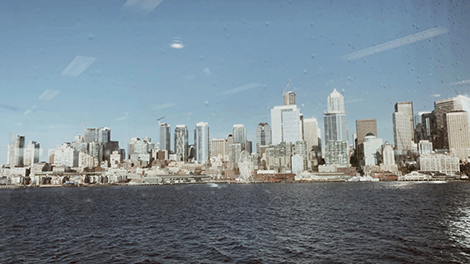The latest “State of the Air†report from the American Lung Association has the Seattle-Tacoma metropolitan area among the 25 most-polluted cities in the United States for short-term particle pollution.
In ozone pollution (also called smog), King County received an F grade in this year’s report and recorded the same number of unhealthy ozone days as in last year’s report. Benton County, in eastern Washington, also got an F. Pierce County received a C.
Seniors are among the people who can suffer the worst health effects of polluted air, said Carrie Nyssen, senior director of advocacy for the American Lung Association.
“State of the Air†2021 (lung.org/sota) placed three other Washington cities or metropolitan areas in the top 25 for worst short-term pollution, meaning unhealthy air quality caused temporarily by spikes in smoke and soot from wildfires, for instance. Besides Seattle-Tacoma at number 14, Yakima was fifth, Spokane 11th, and Vancouver-Portland 23rd. Spokane and Yakima recorded the highest number of days of unhealthy particle pollution levels, largely due to smoke from wildfires.
All but two of the worst 25 cities are in western states, led by 10 in California. Joining Yakima among the five worst cities are, from first to fourth, Fairbanks, Alaska, and Fresno, Bakersfield and San Jose-San Francisco, Calif.
Ozone pollution, or smog, forms in the atmosphere when gases from vehicle tailpipes, smokestacks, oil and gas extraction, and other sources react to sunlight.
“Particle pollution remains the dominant air pollutant,†Nyssen said. “Wildfire smoke and woodstoves are two major contributors to particle pollution. These particles are so small they easily penetrate deep into the lungs and even into our bloodstream, leading to premature deaths, heart attacks and asthma attacks. Children, older adults and people living with lung disease are particularly vulnerable to poor air quality. More must be done to protect our public health and clean our air.â€
In Washington, that effort is the work of Puget Sound Clean Air Agency. And there is lots of work to do. According to agency officials, while air pollution has been reduced over the years, wood smoke from wood stoves and outdoor burning continue to be a major source of particle pollution, especially in colder winter months. And emissions from cars and trucks, other transportation sources, and industry contribute to pollution in the Puget Sound region.
The agency’s goal is regional compliance with federal and state air-quality standards in its four-county jurisdiction of King, Pierce, Kitsap and Snohomish counties, where about 4 million people live—more than half the state’s population.
Air quality in Tacoma varies based on seasons and weather conditions. While the majority of days in the city are deemed healthy, an average of nine days a year are classified as “unhealthy†by federal Environmental Protection Agency standards, according to IQAir, a real-time air-quality monitoring service.
Nyssen noted that nationally, wildfire seasons “are lasting longer and burning more acreage while creating smoke that is harmful to our public health. Exposure to this smoke has been linked to lung and heart diseases. It’s vital to keep working to implement policies to lessen exposure to wildfire smoke – and any air pollutant.â€
The Lung Association’s annual air quality “report card†tracks and grades Americans’ exposure to unhealthy levels of particle pollution and smog over a three-year period. This year’s report covers 2017-19. It revealed that nationwide, 135 million people lived with polluted air, and that people of color were more likely to live in a county with unhealthy air than white people. Also, climate change made air quality worse and harder to improve.
